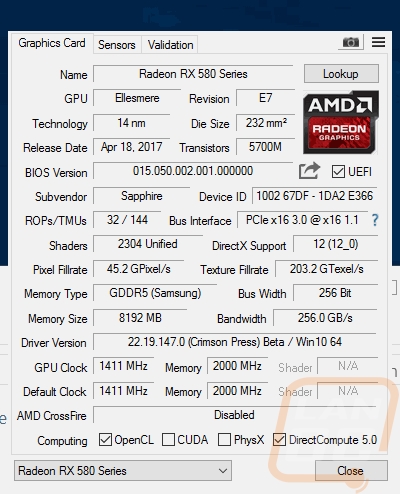2017 has been crazy and we are only a few months in really with multiple big launches from AMD. They launched their RX 400 series of cards last June and the excitement and hype has hardly slowed down in AMD groups. Now that Ryzen 7 and 5 are both out and with rumors of Vega starting to pick up AMD decided to slip in the 500 Series launch. This might be one of the worst kept secrets with cards being sold worldwide for the past week or two but today is the day we finally dive into it all officially. For the launch, AMD sent over the latest Sapphire Nitro+ RX580 in an 8GB Limited Edition version. So today I’m going to run through what the 500 Series is all about and then I’m going to test the Sapphire card and see how it compares. For even more fun I dug out the RX480 Nitro+ that dominated our RX480 charts to see how the new card compares to its year older brother.
Product Name: Sapphire Nitro+ RX580 8GB LE
Review Sample Provided by: Sapphire
Written by: Wes
Pictures by: Wes
Amazon Link: HERE
RX580
So just to start things off, a lot of people thought and some still think that the 500 Series launch is AMDs Vega launch, that is not the case. This is, in fact, a refresh of the 400 Series of cards based on Polaris. Driver and software wise, the RX 400 cards have improved a lot from their launch and if you haven’t followed that you might be surprised at how they perform now. AMD is taking advantage of that improvement and bumping up clock speeds as well and rebranding the cards. That is why on our press call AMD used the terms Polaris Evolved and Polaris Enhanced. This slide in fact really summed it all up. Aggressive tuning for higher clocks, expanded options with a lot of partner designs, and enhanced idle and multi-monitor efficiency.
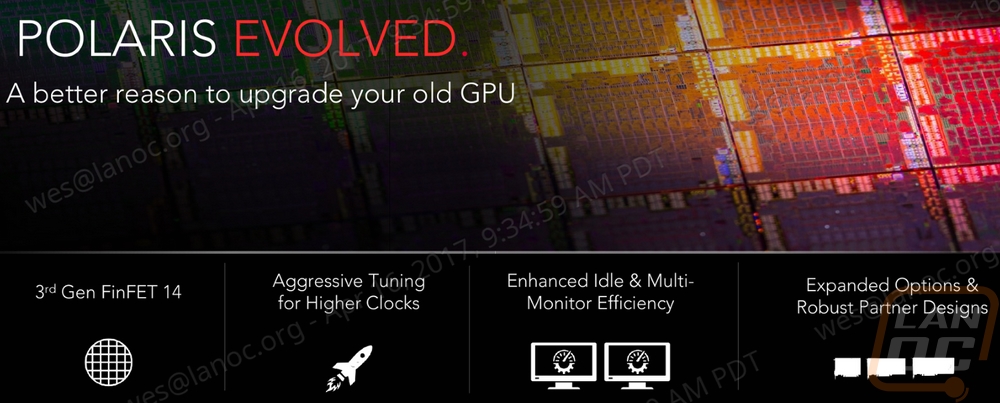
One of the big introductions a while back was Radeon Chill but it didn’t get very much attention. AMD has now expanded the games supported to include League of Legends and DOTA2 two of the most popular games played. Basically, Radeon Chill work in games that don’t need as much graphical power as other games like older games and the eSport focused games that will run on anything. They basically cap your framerates to lower power usage and keep your card running cool. The goal at least is to cap high enough where it isn’t noticeable so on the RX580 they are looking at between 60 and 144 FPS. They also claim quicker response times as well with fewer framing being queued.
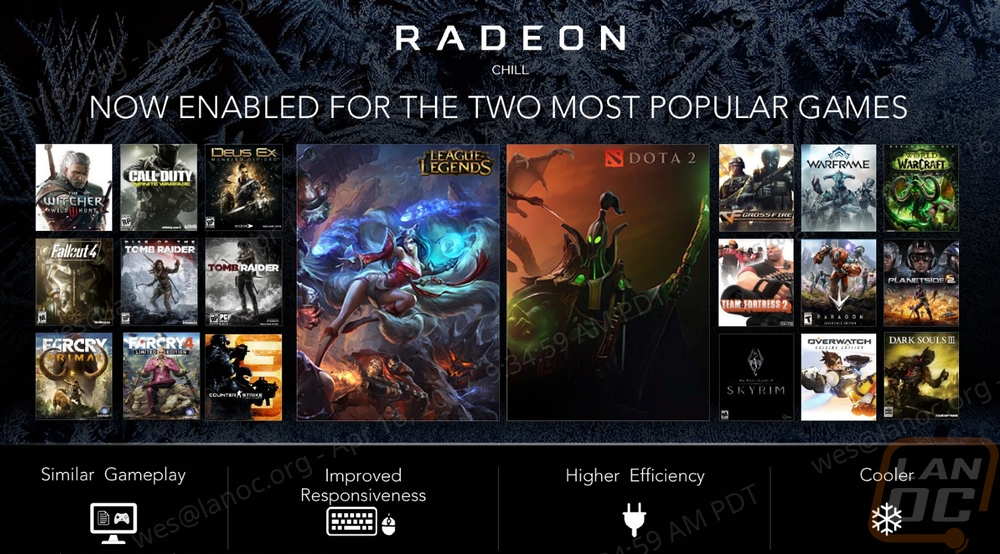
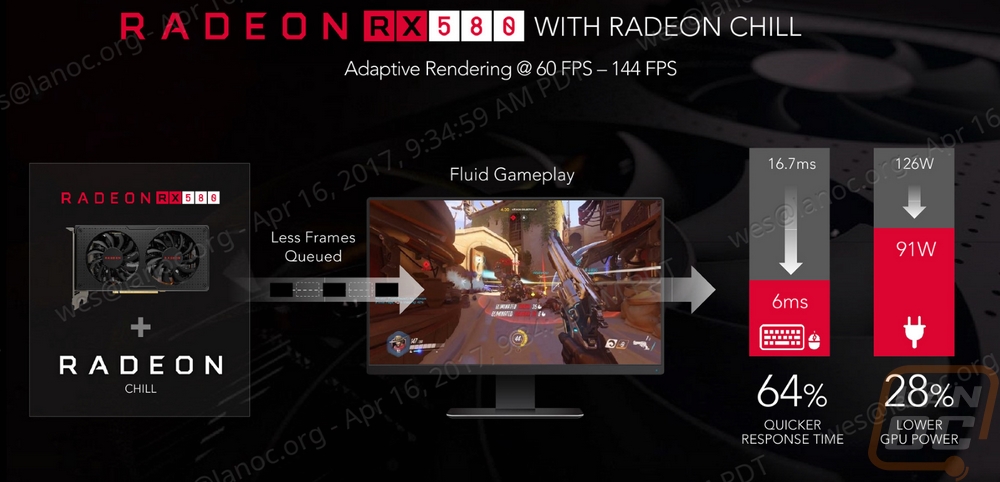
So here is the RX500 Series of cards. They are introducing the RX580, RX570, RX560, and RX550 replacing the similarly named 400 series cards.
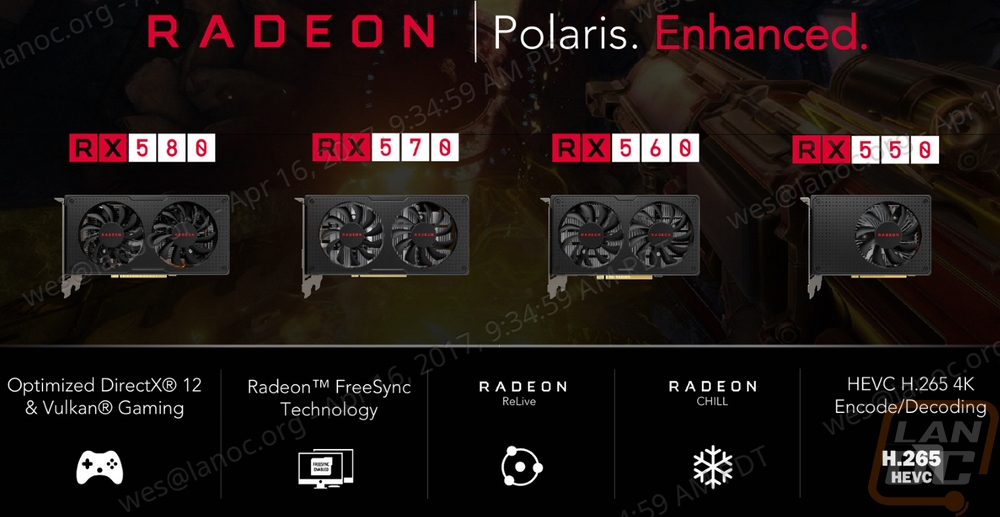
So the RX580 has the same 8 and 4 gig models as the RX480 had. Nothing changes for compute units as well with the same 36 compute units. The RX480, however, had a boost clock of 1266 MHz and a base clock of 1120 MHz where the RX580 at stock speeds has a base clock of 1257MHz and a boost clock of 1340MHz, not a bad jump. Now aftermarket cards will be pushing past that I’m sure.
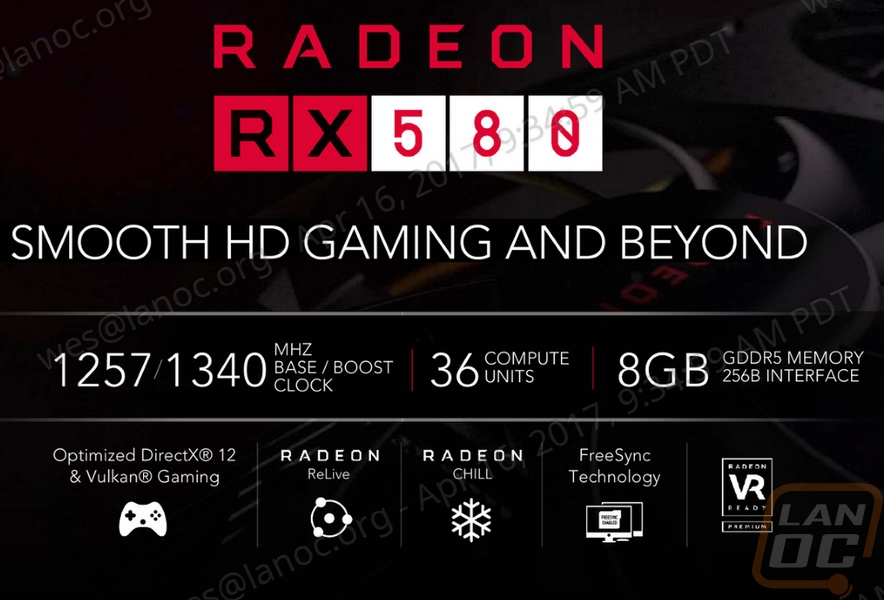
The RX570 does a similar jump with the new clock speeds being 1168/1244MHz compared to the RX470 stock clocks of 926/1206. The base clock making an especially big jump.
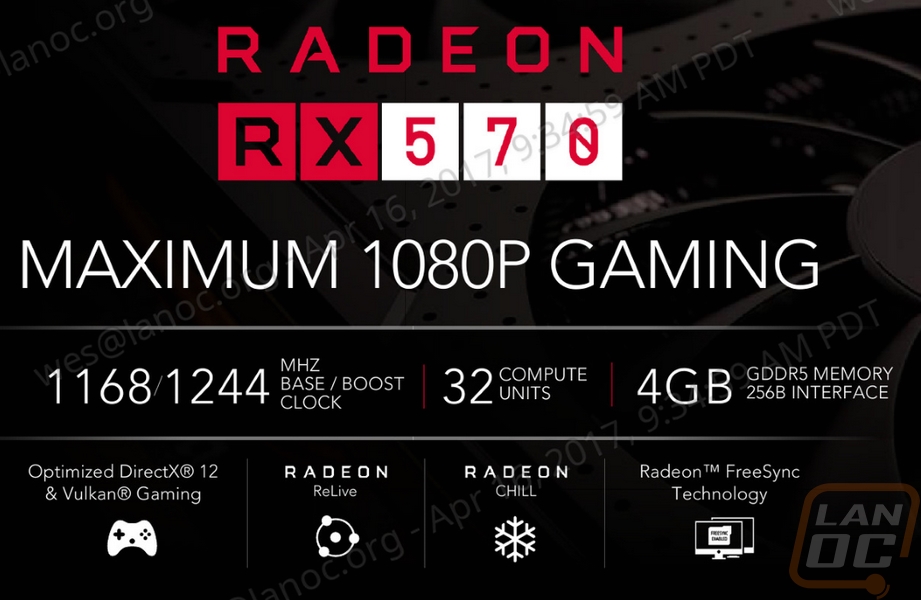
The RX560 takes the 1090 base clock and 1200 boost clock of the stock RX460 and bumps it up to 1175 base and 1275MHz.
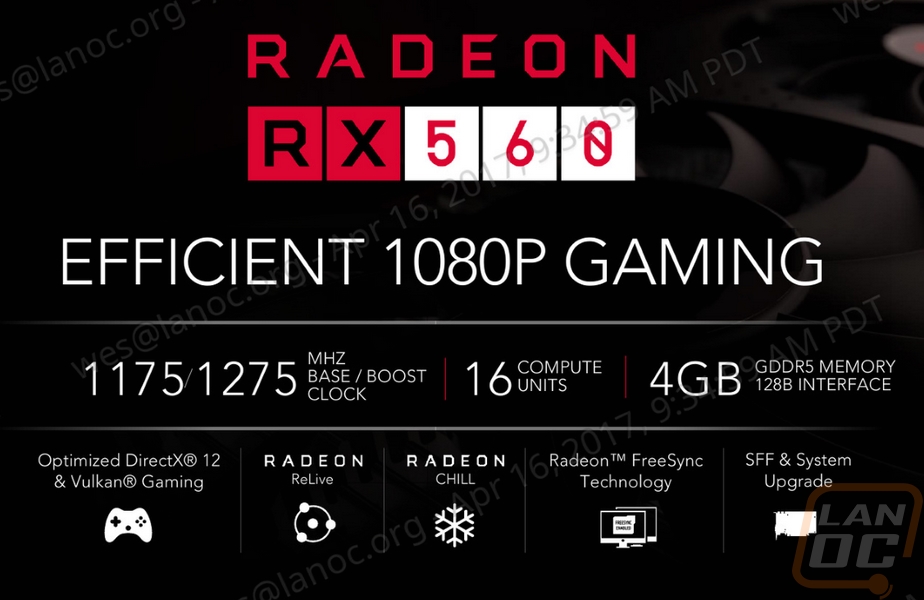
The RX550 is a little more interesting because it doesn’t have a direct competitor from the RX400 series. It is a much smaller, single fan card with a 1183Mhz boost clock. It only has 8 compute units and 2 gigs of vRAM as an entry level card.
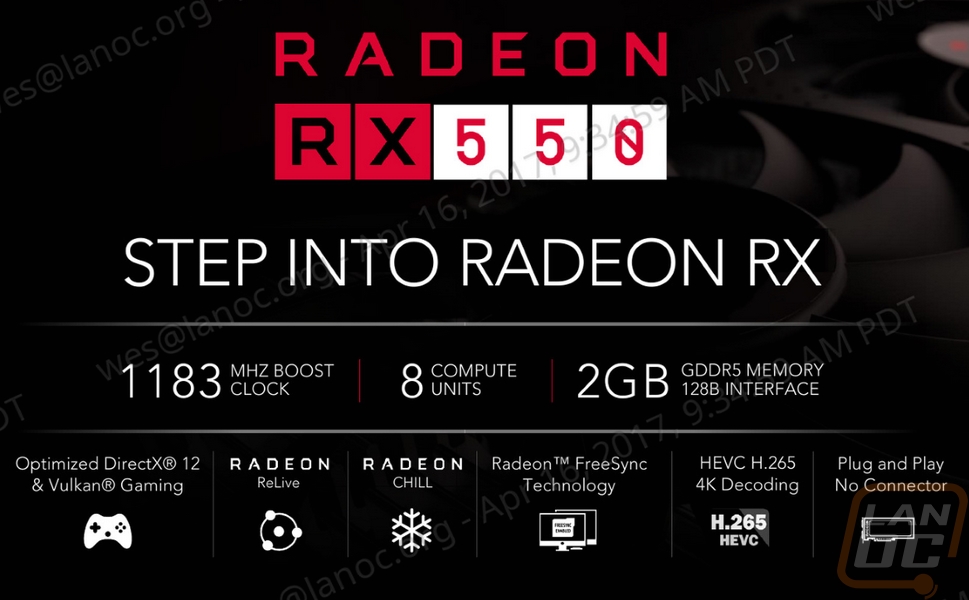
Here is a larger specification breakdown for the RX580 and RX570.
|
Specifications |
Radeon RX580 |
Radeon RX570 |
|
GCN Architecture |
4th Generation |
4th Generation |
|
Manufacturing Process |
14-nm FinFET |
14-nm FinFET |
|
Die Size |
232 mm² |
232 mm² |
|
Compute Unites |
36 |
32 |
|
Stream Processors |
2304 |
2048 |
|
Clock Speeds (Boost / Base) |
1340 Mhz / 1257 Mhz |
1244 Mhz / 1168 Mhz |
|
Peak Compute Performance |
Up to 6.17 TFLOPS |
Up to 5.1 TFLOPS |
|
Texture Units |
144 |
128 |
|
Peak Texture Fill-Rate |
Up to 193.0 GT/s |
Up to 159.2 GT/s |
|
ROPs |
32 |
32 |
|
Peak Pixal Fill-Rate |
Up to 42.9 GP/s |
Up to 39.8 GP/s |
|
Memory Size |
8 GB |
4 GB |
|
Memory Bandwidth |
256 GB/s |
224 GB/s |
|
Memory Interface |
256 bit |
256 bit |
|
Memory Type |
GDDR5 |
GDDR5 |
|
Board Power |
185W |
150W |
|
AMD FreeSync Technology |
Yes |
Yes |
|
DirectX 12 Support |
Yes |
Yes |
|
Vulkan Support |
Yes |
Yes |
|
Displayport Version |
1.3 HBR / 1.4 HDR Ready |
1.3 HBR / 1.4 HDR Ready |
